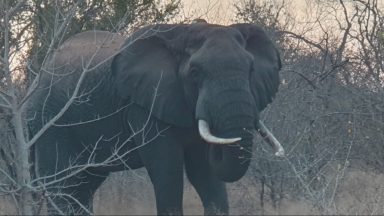Today in Maputo Special Reserve there is a zebra that needs help. A team of rangers including Peace Parks’ Dolph and Uwe, with support from Mozambique’s Wildlife Alliance, Dr. Ignacio is soon at hand to help out. It seems that the male zebra was wounded by a snare which had cut into one of his rear hooves.
Zebra are built for speed and long-distance migrations and although they might all look the same to us, there are in fact three species of these animals. There is the plains zebra, Grevy’s zebra and the mountain zebra. This one is a plains zebra, found in the rich grasslands of much of southern Africa. Unfortunately, these animals are targeted for meat and distinctive skins, so snaring is the rangers’ first thought.
This zebra has been lucky as it has been found by rangers. Lifting it up onto the back of their truck, they take it to a suitable location within the park where they treat the wound. Afterwards, the zebra is given a reverse drug to get it up and running again. The animal follows the truck for a long time before finally dropping back to head off and pick up with his herd.
The plains of Africa’s wilderness areas are traversed by millions of animals, the vast majority of which are grazers, like this zebra. Zebra have extremely good eyesight. Although not as celebrated as some other African mammals, the continent’s ecosystems could not survive without grazers. They rejuvenate the plains by allowing fresh new grass to sprout, and their dung provides an endless source of nutrient-rich fertiliser. Because of this, grazers are usually the first species to be translocated into wilderness areas by Peace Parks Foundation. When grazers have successfully established themselves, they steadily pave the way towards a healthy ecosystem and eventually allow for the reintroduction of predators. A perfect example of this is seen in Maputo Special Reserve where this zebra now lives, as the growing animal populations allowed Peace Parks and ANAC to reintroduce cheetah in 2021.

